El Renacimiento
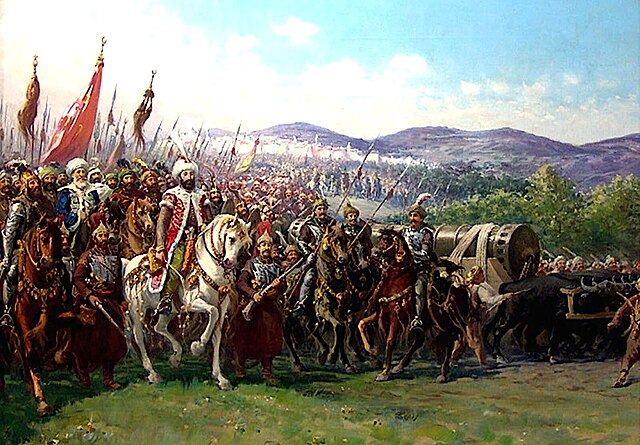
The fall of Constantinople in 1453 marked the end of the Byzantine Empire and, indeed, the Roman Empire, a state that dated back to 27 BC and lasted nearly 1,500 years.
The capture of Constantinople, a city that marked the divide between Europe and Asia Minor, also allowed the Ottomans to more effectively invade mainland Europe, eventually leading to Ottoman control of much of the Balkan peninsula.
The conquest of Constantinople and the fall of the Byzantine Empire was a key event of the Middle Ages and is considered the end of the medieval period.
La caída de Constantinopla en 1453 marcó el fin del Imperio Bizantino y, de hecho, del Imperio Romano, un estado que se remontaba al año 27 a.C. y que duró casi 1.500 años.
La toma de Constantinopla, una ciudad que marcaba la división entre Europa y Asia Menor, también permitió a los Otomanos invadir con mayor eficacia la Europa continental, lo que finalmente condujo al control Otomano de gran parte de la península de los Balcanes.
La conquista de Constantinopla y la caída del Imperio Bizantino fue un acontecimiento clave de la Edad Media y se considera el final del periodo medieval.
Around these dates, very important events gave rise to the movement that was to be called “The Renaissance” and that, although centered in Italy, was actually caused by events that were to change the world irreversibly.
Shortly before the fall of Constantinople, Gutenberg invented the movable type printing press, Spain expelled the Moors and shortly after financed an expedition that would result in the discovery of America.
Nicolas Copernicus presents his heliocentric system, thus initiating the scientific revolution.
Alrededor de esas fechas, eventos muy importantes dieron orígen al movimimiento que habría de llamarse “El Renacimiento” y que, aun cuando se centra en Italia, fué en realidad causado por eventos que habrían de cambiar al mundo de manera irreversible.
Poco antes de la caida de Constantinopla, Gutenberg inventa la imprenta de tipo movible, España expulsa a los moros y poco después financia una expedición que habría de resultar en el descubrimiento de América.
Nicolas Copérnico presenta su sistema heliocéntrico iniciando con ello la revolución científica.
The Transition Period / El Periodo de transición
Video: Johannes Gutenberg and the Printing Press / Johannes Gutenberg y la imprenta
Video: Siege of Constantinople | Ottoman Empire vs Romans – Epic Cinematic Total War Battle
Video: Nicolás Copérnico
Video: Martín Lutero
Video: La Reforma Protestante
Video: Andreas Vesalius. The Book That Fixed Anatomy: De Humani Corporis Fabrica
Video: La Reina Isabel y la Caída de Granada
Video: Las Guerras italianas del Siglo XV
Early Renaissance / Inicios del Renacimiento
The first time the term “Renaissance” was used to describe the period we are describing was by Giorgio Vasary in Florence in 1550 in his book on the life of the Artists.
The very idea of renaissance was born in Italy where artists, architects and men of science worked on the recovery of ancient knowledge and at the same time tried to overcome it.
We can acquire a very good overview with the following three videos by Waldemar Januszczak. (Wikipedia)
La primera vez que se usó el término “Renacimiento” para describir a el periodo que describimos, fué por Giorgio Vasary en Florencia en 1550 en su libro sobre la vida de los Artistas.
La idea misma de renacimiento se gestó en Italia en donde artistas, arquitectos y hombres de ciencia trabajan en la recuperación del conocimiento antiguo a la vez que trataban de superarlo.
Podemos adquirir un panorama general muy bueno con los siguientes tres videos de Waldemar Januszczak. (Wikipedia)
El Renacimiento
Italian Renaissance / Renacimiento en Italia
Filippo Brunelleschi (1377 – 1446) , and also nicknamed Pippo by Leon Battista Alberti, was an Italian architect, designer, goldsmith and sculptor. He is considered to be a founding father of Renaissance architecture. He is recognized as the first modern engineer, planner, and sole construction supervisor.[5][6] In 1421, Brunelleschi became the first person to receive a patent in the Western world.[7][8] He is most famous for designing the dome of the Florence Cathedral, and for the mathematical technique of linear perspective in art which governed pictorial depictions of space until the late 19th century and influenced the rise of modern science.[9][10] His accomplishments also include other architectural works, sculpture, mathematics, engineering, and ship design.[6] Most surviving works can be found in Florence. (Wikipedia)
Filippo Brunelleschi (1377–1446) y también apodado Pippo por Leon Battista Alberti, fue un arquitecto, diseñador, orfebre y escultor italiano. Se le considera el padre fundador de la arquitectura renacentista . Es reconocido como el primer ingeniero, planificador y único supervisor de construcción moderno. [5] [6] En 1421, Brunelleschi se convirtió en la primera persona en recibir una patente en el mundo occidental. [7] [8] Es más famoso por diseñar la cúpula de la Catedral de Florencia y por la técnica matemática de la perspectiva lineal en el arte que gobernó las representaciones pictóricas del espacio hasta finales del siglo XIX e influyó en el surgimiento de la ciencia moderna. [9] [10] Sus logros también incluyen otras obras de arquitectura, escultura, matemáticas, ingeniería y diseño de barcos. [6] La mayoría de las obras supervivientes se pueden encontrar en Florencia. (Wikipedia)
Cosimo di Giovanni de’ Medici (1389 -1464) was an Italian banker and politician who established the Medici family as effective rulers of Florence during much of the Italian Renaissance. His power derived from his wealth as a banker and intermarriage with other rich and powerful families.[1] He was a patron of arts, learning, and architecture.[2] He spent over 600,000 gold florins[3][4] (approx. $500 million inflation adjusted) on art and culture, including Donatello’s David, the first freestanding nude male sculpture since antiquity.
Despite his influence, his power was not absolute; Florence’s legislative councils at times resisted his proposals throughout his life, and he was viewed as first among equals, rather than an autocrat.[5] He was even exiled for a year in 1433-1434.
He expanded his bank throughout Western Europe and opened offices in London, Pisa, Avignon, Bruges, Milan, and Lübeck. (Wikipedia)
Cosimo di Giovanni de’ Medici (1389 –1464) fue un banquero y político italiano que estableció a la familia Medici como gobernantes efectivos de Florencia durante gran parte del Renacimiento italiano . Su poder derivaba de su riqueza como banquero y de sus matrimonios con otras familias ricas y poderosas. [1] Fue un mecenas de las artes, el aprendizaje y la arquitectura. [2] Gastó más de 600.000 florines de oro [3] [4] (aproximadamente 500 millones de dólares ajustados a la inflación) en arte y cultura, incluido el David de Donatello , la primera escultura masculina desnuda independiente desde la antigüedad. A pesar de su influencia, su poder no era absoluto; Los consejos legislativos de Florencia en ocasiones se resistieron a sus propuestas a lo largo de su vida, y fue visto como el primero entre iguales, más que como un autócrata. [5] Incluso estuvo exiliado durante un año en 1433-1434.
Expandió su banco toda Europa occidental y abrió oficinas en Londres, Pisa, Aviñón, Brujas, Milán, y Lübeck. (Wikipedia)
Lorenzo di Piero de’ Medici (1449 -1492), known as Lorenzo the Magnificent (Italian: Lorenzo il Magnifico; was an Italian statesman, the de facto ruler of the Florentine Republic, and the most powerful patron of Renaissance culture in Italy.[3][4][5] Lorenzo held the balance of power within the Italic League, an alliance of states that stabilized political conditions on the Italian Peninsula for decades, and his life coincided with the mature phase of the Italian Renaissance and the golden age of Florence.[6] As a patron, he is best known for his sponsorship of artists such as Botticelli and Michelangelo. On the foreign policy front, Lorenzo manifested a clear plan to stem the territorial ambitions of Pope Sixtus IV, in the name of the balance of the Italian League of 1454. For these reasons, Lorenzo was the subject of the Pazzi conspiracy (1478), in which his brother Giuliano was assassinated. The Peace of Lodi of 1454 that he supported among the various Italian states collapsed with his death. He is buried in the Medici Chapel in Florence. (Wikipedia)
Lorenzo di Piero de Medici(1449 –1492) conocido como Lorenzo el Magnífico fue un estadista italiano, gobernante de facto de la República Florentina , y el mecenas más poderoso de la cultura renacentista en Italia. Lorenzo mantuvo el equilibrio de poder dentro de la Liga Itálica , una alianza de estados que estabilizó las condiciones políticas en la península italiana durante décadas, y su vida coincidió con la fase madura del Renacimiento italiano y la época dorada. época de Florencia. Como mecenas, es mejor conocido por su patrocinio de artistas como Botticelli y Miguel Ángel . En el frente de la política exterior, Lorenzo manifestó un plan claro para frenar las ambiciones territoriales del Papa Sixto IV, en nombre del equilibrio de la Liga Italiana de 1454. Por estas razones, Lorenzo fue objeto de la conspiración Pazzi (1478), en el que fue asesinado su hermano Giuliano . La Paz de Lodi de 1454 que apoyó entre los distintos estados italianos se derrumbó con su muerte. Está enterrado en la Capilla de los Medici de Florencia. (Wikipedia)
The printing press of Subiaco (1464) in Italy is used to print classic books.
The Subiaco Printing Press was a printing press located in Subiaco, Italy. The printing press was founded in 1464 by German monks Arnold Pannartz and Konrad Sweynheim at the Abbey of St. Scholastica, Subiaco . Sweynheim had worked with Johannes Gutenberg , the inventor of the mechanical movable type printing press . Thanks to this invention, Subiaco Press was the first printing press in Italy. It was used to print classic books. (Wikipedia)
La imprenta de Subiaco (1464) en Italia es usada para imprimir libros clásicos.
La Imprenta Subiaco era una imprenta ubicada en Subiaco , Italia . La imprenta fue fundada en 1464 por los monjes alemanes Arnold Pannartz y Konrad Sweynheim en la Abadía de Santa Escolástica, Subiaco . Sweynheim había trabajado con Johannes Gutenberg , el inventor de la imprenta mecánica de tipos móviles . Gracias a esta invención, Subiaco Press fue la primera imprenta de Italia. Fue usada para imprimir libros clásicos. (Wikipedia)
Música del Renacimiento
Gutenberg (1439) printed the Bible on his printing press and began the era of mass printing that would be a catalyst for the Reformation and the Scientific Revolution. The Gutenberg Bible, also known as the 42-line Bible, Mazarin Bible or B42, was the first major book printed in Europe using mass-produced metal movable type. It marked the beginning of the “Gutenberg Revolution” and the era of the printed book in the West. The book is valued and revered for its high aesthetic and artistic qualities [1] and its historical significance.
Gutenberg(1439) imprime la Biblia en su imprenta y comienza la era de la impresión en masa que sería un catalizador de la Reforma y la Revolución Científica. La Biblia de Gutenberg , también conocida como Biblia de 42 líneas , Biblia de Mazarino o B42 , fue el primer libro importante impreso en Europa utilizando tipos móviles metálicos producidos en masa . Marcó el inicio de la ” Revolución Gutenberg ” y la era del libro impreso en Occidente. El libro es valorado y venerado por sus altas cualidades estéticas y artísticas [1] y su significado histórico.
The Gutenberg Bible is an edition of the Latin Vulgate printed in the 1450s by Johannes Gutenberg in Mainz, in present-day Germany. Forty-nine copies (or substantial portions of copies) have survived. They are believed to be among the most valuable books in the world, although no complete copy has been sold since 1978. [2][3] In March 1455, the future Pope Pius II wrote that he had seen pages of the Gutenberg Bible on display in Frankfurt to promote the edition, and that 158 or 180 copies had been printed. Wikipedia (Condensed / condensado)
La Biblia de Gutenberg es una edición de la Vulgata Latina impresa en la década de 1450 por Johannes Gutenberg en Maguncia , en la actual Alemania . Han sobrevivido cuarenta y nueve copias (o porciones sustanciales de copias). Se cree que se encuentran entre los libros más valiosos del mundo, aunque no se ha vendido ninguna copia completa desde 1978. [2] [3] En marzo de 1455, el futuro Papa Pío II escribió que había visto páginas de la Biblia de Gutenberg expuestas en Frankfurt. para promocionar la edición, y que se habían impreso 158 o 180 ejemplares. Wikipedia (Condensed / condensado)
Fall of Constantinople (1453) : The end of classical antiquity. The fall of Constantinople , also known as the conquest of Constantinople , was the capture of the capital of the Byzantine Empire by the Ottoman Empire . The city was captured on May 29, 1453 as part of the culmination of a 53-day siege that had begun on April 6. (Wikipedia)
Caída de Constantinopla (1453) : El fin de la antiguedad clásica. La caída de Constantinopla , también conocida como conquista de Constantinopla , fue la captura de la capital del Imperio Bizantino por parte del Imperio Otomano . La ciudad fue capturada el 29 de mayo de 1453 como parte de la culminación de un asedio de 53 días que había comenzado el 6 de abril. (Wikipedia)
Fin de la Antigüedad Clásica
Nicolas Copernicus (1473 –1543) “Copérnico nació y murió en la Prusia Real, región que formaba parte del Reino de Polonia desde 1466. Políglota y polymath, se doctoró en derecho canónico y fue matemático, astrónomo, médico, estudioso de los clásicos, traductor, gobernador, diplomático y economista. En 1517 dedujo una teoría cuantitativa del dinero -un concepto clave en economía- y en 1519 formuló un principio económico que más tarde pasó a llamarse Ley de Gresham” Traducción de un párrafo del artículo de wikipedia
Martin Luther (1483-1546) wrote his 95 theses in 1517 and later translated the bible into German and in 1530 established the Lutheran church.
He was a priest, theologian, author, hymn writer, teacher and Augustinian friar. He was the pivotal figure of the Protestant Reformation, and his theologies form the basis of Lutheranism. (https://en.wikipedia.org/wiki/Martin_Luther)
Martin Luther (1483–1546) escribe sus 95 tesis en 1517 y después traduce la biblia al Alemán y en 1530 establece la iglesia Luterana.
Fue un sacerdote, teólogo, autor, compositor de himnos, profesor y fraile agustino. Fue la figura fundamental de laReforma Protestante, y susteológicas forman la base del luteranismo.
(https://en.wikipedia.org/wiki/Martin_Luther)
Conrad Gessner 1516 – 1565) was a Swiss physician, naturalist, bibliographer, and philologist. Born in Zürich, Switzerland. He studied classical languages, theology and medicine. He became Zürich’s city physician. Gessner compiled monumental works on bibliography (Bibliotheca universalis 1545–1549) and zoology (Historia animalium 1551–1558) and was working on a major botanical text at the time of his death. He is regarded as the father of modern scientific bibliography, zoology and botany. He was frequently the first to describe species of plants or animals in Europe, such as the tulip in 1559. A number of plants and animals have been named after him. (Wikipedia)
Conrad Gessner 1516 – 1565) fue un médico, naturalista, bibliógrafo y filólogo suizo. Nació en Zúrich, Suiza. Estudió lenguas clásicas, teología y medicina. Llegó a ser médico de la ciudad de Zúrich. Gessner compiló obras monumentales sobre bibliografía (Bibliotheca universalis 1545-1549) y zoología (Historia animalium 1551-1558) y estaba trabajando en un importante texto de botánica en el momento de su muerte. Se le considera el padre de la bibliografía científica, la zoología y la botánica modernas. Con frecuencia fue el primero en describir especies de plantas o animales en Europa, como el tulipán en 1559. Varias plantas y animales llevan su nombre. (Wikipedia)
Guillaume Rondelet (1507 – 1566) was Regius professor of medicine at the University of Montpellier in southern France and Chancellor of the University between 1556 and his death in 1566. He achieved renown as an anatomist and a naturalist with a particular interest in botany and ichthyology. His major work was a lengthy treatise on marine animals, but his lasting impact lay in his education of a roster of star pupils who became leading figures in the world of late-16th century science. (Wikipedia)
Guillaume Rondelet (1507 – 1566) fue profesor regio de medicina en la Universidad de Montpellier (sur de Francia) y rector de la misma entre 1556 y su muerte en 1566. Alcanzó renombre como anatomista y naturalista, con especial interés por la botánica y la ictiología. Su principal obra fue un extenso tratado sobre los animales marinos, pero su impacto duradero residió en la educación de una serie de alumnos ilustres que se convirtieron en personalidades destacadas en el mundo de la ciencia de finales del siglo XVI. (Wikipedia)
Andreas Vesalius (Andries van Wezel) (1514 – 1564), was an anatomist and physician who wrote De Humani Corporis Fabrica Libri Septem (On the fabric of the human body in seven books), what is considered to be one of the most influential books on human anatomy and a major advance over the long-dominant work of Galen. Vesalius is often referred to as the founder of modern human anatomy. He was born in Brussels, which was then part of the Habsburg Netherlands. He was a professor at the University of Padua (1537–1542) and later became Imperial physician at the court of Emperor Charles V.
Andreas Vesalius (Andries van Wezel) (1514 – 1564), anatomista y médico, escribió De Humani Corporis Fabrica Libri Septem (Sobre la estructura del cuerpo humano en siete libros), considerado uno de los libros más influyentes sobre anatomía humana y un gran avance respecto a la obra de Galeno, dominante durante mucho tiempo. A menudo se hace referencia a Vesalio como el fundador de la anatomía humana moderna. Nació en Bruselas, que entonces formaba parte de los Países Bajos de los Habsburgo. Fue profesor en la Universidad de Padua (1537-1542) y más tarde médico imperial en la corte del emperador Carlos V.
Orlando di Lasso ( 1532–1594) was a composer of the late Renaissance. The chief representative of the mature polyphonic style in the Franco-Flemish school, Lassus stands with William Byrd, Giovanni Pierluigi da Palestrina, and Tomás Luis de Victoria as one of the leading composers of the later Renaissance. Immensely prolific, his music varies considerably in style and genres, which gave him unprecedented popularity throughout Europe. (Wikipedia)
Orlando di Lasso ( 1532-1594) fue un compositor del Renacimiento tardío. Principal representante del estilo polifónico maduro de la escuela franco-flamenca, Lassus es, junto con William Byrd, Giovanni Pierluigi da Palestrina y Tomás Luis de Victoria, uno de los compositores más destacados del Renacimiento tardío. Inmensamente prolífico, su música varía considerablemente en estilo y géneros, lo que le proporcionó una popularidad sin precedentes en toda Europa. (Wikipedia)
Música de Orlando de Lassus
Johannes Kepler (1571–1630) was a German astronomer, mathematician, astrologer, natural philosopher and writer on music. He is a key figure in the 17th-century Scientific Revolution, best known for his laws of planetary motion, and his books Astronomia nova, Harmonice Mundi, and Epitome Astronomiae Copernicanae, influencing among others Isaac Newton, providing one of the foundations for his theory of universal gravitation. The variety and impact of his work made Kepler one of the founders and fathers of modern astronomy, the scientific method, natural and modern science. He has been described as the “father of science fiction” for his novel Somnium. (Wikipedia)
Johannes Kepler (1571-1630) fue un astrónomo, matemático, astrólogo, filósofo natural y escritor musical alemán, figura clave de la Revolución Científica del siglo XVII, conocido sobre todo por sus leyes del movimiento planetario y sus libros Astronomia nova, Harmonice Mundi y Epitome Astronomiae Copernicanae, que influyeron, entre otros, en Isaac Newton, proporcionando uno de los fundamentos de su teoría de la gravitación universal. La variedad y repercusión de su obra convirtieron a Kepler en uno de los fundadores y padres de la astronomía moderna, el método científico y la ciencia natural y moderna Se le ha descrito como el “padre de la ciencia ficción” por su novela Somnium. (Wikipedia)
John Calvin (1509–1564) was a French theologian, pastor and reformer in Geneva during the Protestant Reformation. He was a principal figure in the development of the system of Christian theology later called Calvinism, including its doctrines of predestination and of God’s absolute sovereignty in the salvation of the human soul from death and eternal damnation. Calvinist doctrines were influenced by and elaborated upon the Augustinian and other Christian traditions. Various Congregational, Reformed and Presbyterian churches, which look to Calvin as the chief expositor of their beliefs, have spread throughout the world.
Calvin introduced new forms of church government and liturgy, spent his final years promoting the Reformation both in Geneva and throughout Europe. (Wikipedia)
John Calvin (1509-1564) fue un teólogo, pastor y reformador francés de Ginebra durante la Reforma protestante. Fue una figura principal en el desarrollo del sistema de teología cristiana que más tarde se llamó calvinismo, incluidas sus doctrinas de la predestinación y de la soberanía absoluta de Dios en la salvación del alma humana de la muerte y la condenación eterna. Las doctrinas calvinistas se vieron influidas y desarrolladas por la tradición agustiniana y otras tradiciones cristianas. Diversas iglesias congregacionales, reformadas y presbiterianas, que consideran a Calvino como el principal expositor de sus creencias, se han extendido por todo el mundo.
Calvino introdujo nuevas formas de gobierno eclesiástico y liturgia; pasó sus últimos años promoviendo la Reforma tanto en Ginebra como en toda Europa. (Wikipedia)
Michael Praetorius (1571–1621) was a German composer, organist, and music theorist.[2] He was one of the most versatile composers of his age, being particularly significant in the development of musical forms based on Protestant hymns. (Wikipedia)
Michael Praetorius (1571-1621) fue un compositor, organista y teórico musical alemán[2]. Fue uno de los compositores más versátiles de su época, especialmente importante en el desarrollo de formas musicales basadas en himnos protestantes. (Wikipedia)
Música de Michael Praetorius
The Reformation instigated a revolution in the media, as in 1530 more than 10,000 individual works were published with a total of ten million copies.
The Catholic Counter-Reformation, initiated in 1545 at the Council of Trent, was spearheaded by the Jesuits, its intention was to challenge and contain the Protestant Reformation.
The Peace of Augsburg of 1555 decreed the recognition of the Lutheran faith and the religious division of the empire.
La Reforma instigó una revolución en los medios de comunicación, ya que en 1530 se publican más de 10.000 obras individuales con un total de diez millones de ejemplares.
La Contrarreforma católica, iniciada en 1545 en el Concilio de Trento, fue encabezada por los Jesuitas, su intención era desafiar y contener la Reforma Protestante.
La Paz de Augsburgo de 1555 decretó el reconocimiento de la fe Luterana y la división religiosa del imperio.
El Sacro Imperio Romano en el Renacimiento
1492 is considered a significant year in the history of the West, Europe, Christianity, Islam, Judaism, Spain and the New World, among others, because of the number of significant events that took place.
The events that propelled the year into Western consciousness, listed below, include the completion of the Reconquest of Spain, the discovery of the New World by Europe (Spain) and the expulsion of the Jews from Spain.
1492 es considerado un año significativo en la historia de Occidente , Europa , el cristianismo , el islam , el judaísmo , España y el Nuevo Mundo , entre otros, por la cantidad de hechos significativos que tuvieron lugar.
Los acontecimientos que impulsaron el año a la conciencia occidental, que se enumeran a continuación, incluyen la finalización de la Reconquista de España, el descubrimiento del Nuevo Mundo por parte de Europa (España) y la expulsión de los judíos de España. (copiado y traducido de https://en.wikipedia.org/wiki/1492)
- Fall of Granada.
Isabella of Castile and Ferdinand of Aragon regain control of Spain. - Alexander VI (Rodrigo Borgia) Pope (1492-1503).
- Water games at the Villa d’Este.
- America was discovered by Christopher Columbus; sponsored by the Catholic Monarchs of Spain, who in turn, operated under papal authority.
During that time, the Spanish Armada was the dominant military force, but that was soon to change.
- Caída de Granada.
Isabel de Castilla y Fernando de Aragón recuperan el control de España. - Alexander VI (Rodrigo Borgia) Papa (1492-1503)
- Juegos de agua en la Villa d’Este
- América fue descubierta por Cristobal Colón; patrocinado por los Reyes Católicos de España, quienes a su vez, operaban bajo la autoridad papal.
- Durante ese tiempo, la Armada Española era la fuerza militar dominante, pero eso habría de cambiar muy pronto.
1942
Niccolò di Bernardo dei Machiavelli[a] (1469 – 1527) was a Florentine diplomat, author, philosopher and historian who lived during the Renaissance. He is best known for his political treatise The Prince (Il Principe), written around 1513 but not published until 1532, five years after his death.[4] He has often been called the father of modern political philosophy and political science
Niccolo Machiavelli (1469–1527) fue un diplomático, autor, filósofo e historiador florentino que vivió durante el Renacimiento . Es mejor conocido por su tratado político El Príncipe ( Il Principe ), escrito alrededor de 1513 pero no publicado hasta 1532, cinco años después de su muerte. A menudo se le ha llamado el padre de la filosofía política y la ciencia política modernas.
The encomienda System (1500) The encomienda (Spanish pronunciation: [eŋkoˈmjenda] ⓘ) was a Spanish labour system that rewarded conquerors with the labour of conquered non-Christian peoples. The labourers, in theory, were provided with benefits by the conquerors for whom they laboured, including military protection and education. The encomienda was first established in Spain following the Christian reconquest of Moorish territories (known to Christians as the Reconquista), and it was applied on a much larger scale during the Spanish colonization of the Americas and the Spanish East Indies. Conquered peoples were considered vassals of the Spanish monarch. The Crown awarded an encomienda as a grant to a particular individual. In the conquest era of the early sixteenth century, the grants were considered to be a monopoly on the labour of particular groups of indigenous peoples, held in perpetuity by the grant holder, called the encomendero; starting from the New Laws of 1542, the encomienda ended upon the death of the encomendero, and was replaced by the repartimiento.[1][2]
Sistema de Encomienda (1500) La encomienda era un sistema laboral español que recompensaba a los conquistadores con el trabajo de los pueblos no cristianos conquistados. En teoría, los conquistadores proporcionaban a los trabajadores beneficios como protección militar y educación. La encomienda se estableció por primera vez en España tras la reconquista cristiana de territorios moriscos (conocida por los cristianos como la Reconquista), y se aplicó a una escala mucho mayor durante la colonización española de las Américas y las Indias Orientales españolas. Los pueblos conquistados eran considerados vasallos del monarca español. La Corona concedía una encomienda como merced a un individuo concreto. En la época de la conquista, a principios del siglo XVI, las mercedes se consideraban un monopolio del trabajo de determinados grupos de indígenas, en manos a perpetuidad del titular de la merced, llamado encomendero; a partir de las Leyes Nuevas de 1542, la encomienda se extinguió a la muerte del encomendero, y fue sustituida por el repartimiento[1][2].
Pope Pius III (1439 – 1503) Born at Siena, 1439; elected , 1503; d. in Rome, in1503, after a pontificate of four weeks. Piccolomini was the son of a sister of Pius II. He had passed his boyhood in destitute circumstances when his uncle took him into his household, bestowed upon him his family name and arms, and superintended his training and education. After the death of Alexander VI, ; hence the great majority cast their votes for Piccolomini, who though only sixty-four was, like his uncle, tortured with gout and was prematurely old. He took the name of Pius III in honour of his uncle. The strain of the long ceremony was so great that the pope sank under it. His remains by the side of Pius II.
Papa Pio II (1439 – 1503) Nació en Siena en 1439; fue elegido en 1503; murió en Roma en 1503, tras un pontificado de cuatro semanas. Piccolomini era hijo de una hermana de Pío II. Había pasado su infancia en circunstancias de indigencia cuando su tío lo acogió en su casa, le otorgó su apellido y sus armas, y supervisó su formación y educación. Después de la muerte de Alejandro VI, la gran mayoría votó por Piccolomini, que aunque sólo tenía sesenta y cuatro años, estaba, como su tío, atormentado por la gota y era prematuramente viejo. Tomó el nombre de Pío III en honor de su tío. La tensión de la larga ceremonia fue tan grande que el Papa se hundió. Sus restos descansan junto a los de Pío II.
Pope Julius II (1443 -1503 -1513) Giuliano della Rovere. He was born in 1443 in Albissola, near Savona; he was proclaimed Pope in 1503; he died in Rome in February 1513.
His father was Raffaelo della Rovere and his mother Theodora Manerola, a lady of Greek origin. He followed his uncle Francesco della Rovere into the Franciscan order and was educated under his tutelage in Perugia. With the elevation of his uncle to the papacy as Sixtus IV Giuliano’s public career began and from then on he was literally overflowing with benefices. However, he did not spend this substantial income on vain pomp and dissipation, as was the custom of many ecclesiastics of those times. Giuliano was a patron of the fine arts, and spent most of his money on the construction of magnificent palaces and fortresses. However, his private life was far from blameless, as attested by the fact that before becoming pope he fathered three daughters, the best known of whom, Felice, was given in marriage to Giovanni Giordano Orsini.
Papa Julius II (1443 -1503 -1513) Giuliano della Rovere. Nació en 1443 en Albissola, cerca de Savona; fue proclamado Papa en 1503; murió en Roma en febrero de 1513.
Su padre era Raffaelo della Rovere y su madre Theodora Manerola, una dama de origen griego. Siguió a su tío Francesco della Rovere en la orden franciscana y se educó bajo su tutela en Perugia. Con la elevación de su tío al papado como Sixto IV comienza la carrera pública de Giuliano y a partir de entonces se vio literalmente desbordado de beneficios. Sin embargo, no gastó estos cuantiosos ingresos en vana pompa y disipación, como era costumbre en muchos eclesiásticos de aquellos tiempos. Giuliano era un mecenas de las bellas artes, y gastó la mayor parte de su dinero en la construcción de magníficos palacios y fortalezas. Sin embargo, su vida privada estuvo lejos de ser intachable, como atestigua el hecho de que antes de convertirse en Papa era padre de tres hijas, la más conocida de las cuales, Felice, fue dada en matrimonio a Giovanni Giordano Orsini.
1519 Hernan Cortes conquers Mexico
The Spanish conquest of the Aztec Empire was a pivotal event in the history of the Americas, marked by the collision of the Aztec Triple Alliance and the Spanish Empire, ultimately reshaping the course of human history. Taking place between 1519 and 1521, this event saw the Spanish conquistador Hernán Cortés, and his small army of soldiers and indigenous allies, overthrowing one of the most powerful empires in Mesoamerica.
The conquest of Tenochtitlán, the capital of the Aztec Empire, marked the beginning of Spanish dominance in the region and the establishment of the colony of New Spain. This conquest had profound consequences, as it led to the cultural assimilation, subjugation, and decline of indigenous civilizations in the Americas, while also paving the way for the emergence of a new social hierarchy dominated by Spanish conquerors and their descendants.
1519 Hernán Cortés conquista Mexico
La conquista española del Imperio azteca fue un acontecimiento fundamental en la historia de América, marcado por la colisión de la Triple Alianza azteca y el Imperio español, que acabó por cambiar el curso de la historia de la humanidad. Entre 1519 y 1521, el conquistador español Hernán Cortés y su pequeño ejército de soldados y aliados indígenas derrocaron uno de los imperios más poderosos de Mesoamérica.
La conquista de Tenochtitlán, capital del Imperio azteca, marcó el inicio del dominio español en la región y el establecimiento de la colonia de Nueva España. Esta conquista tuvo profundas consecuencias, ya que provocó la asimilación cultural, el sometimiento y el declive de las civilizaciones indígenas de América, al tiempo que allanó el camino para la aparición de una nueva jerarquía social dominada por los conquistadores españoles y sus descendientes.
Pope Adrian VI (b. 1459, 1522-23, d. 1523 ), the only pope besides Marcellus II to retain his baptismal name in modern times, served from January 9, 1522, to September 14, 1523. Born in humble circumstances in Utrecht on March 2, 1459, he pursued a distinguished academic career, becoming a Doctor of Divinity in 1491. Known for his piety and scholarly works, Adrian rose quickly through the ranks, eventually becoming tutor to the future Emperor Charles V. Despite facing numerous challenges, including financial mismanagement and resistance to reform, Adrian tackled his papal duties with determination. His efforts, however, were hindered by entrenched interests and indifference from European powers. He died on September 14, 1523, leaving behind a legacy of noble struggle against overwhelming odds.
Papa Adrian VI (n. 1459, 1522-23, m. 1523 ), el único Papa, además de Marcelo II, que conservó su nombre de bautismo en tiempos modernos, ejerció su cargo desde el 9 de enero de 1522 hasta el 14 de septiembre de 1523. Nacido en circunstancias humildes en Utrecht el 2 de marzo de 1459, siguió una distinguida carrera académica, llegando a ser Doctor en Divinidad en 1491. Conocido por su piedad y su erudición, ascendió rápidamente en el escalafón hasta convertirse en preceptor del futuro emperador Carlos V. A pesar de enfrentarse a numerosos retos, como la mala gestión financiera y la resistencia a las reformas, Adriano abordó sus obligaciones papales con determinación. Sin embargo, sus esfuerzos se vieron obstaculizados por intereses arraigados y la indiferencia de las potencias europeas. Murió el 14 de septiembre de 1523, dejando tras de sí un legado de noble lucha contra todo pronóstico.
New Spain, officially the Viceroyalty of New Spain (Spanish: Virreinato de Nueva España [birejˈnato ðe ˈnweβa esˈpaɲa] ⓘ), originally the Kingdom of New Spain, was an integral territorial entity of the Spanish Empire, established by Habsburg Spain during the Spanish conquest of the Americas and having its capital in Mexico City. Its jurisdiction comprised a large area of the southern and western portions of North America, mainly what is now Mexico and the Southwestern United States, but also California, Florida and Louisiana; Central America, the Caribbean, and northern parts of South America; several Pacific archipelagos, most notably the Philippines and Guam. Additional Asian colonies included “Spanish Formosa”, on the island now known as Taiwan.
Nueva España, oficialmente Virreinato de Nueva España, fue una entidad territorial integrante del Imperio español, establecida por la España de los Austrias durante la conquista española de América y con capital en Ciudad de México. Su jurisdicción abarcaba una amplia zona del sur y el oeste de Norteamérica, principalmente lo que hoy es México y el suroeste de Estados Unidos, pero también California, Florida y Luisiana; Centroamérica, el Caribe y el norte de Sudamérica; varios archipiélagos del Pacífico, sobre todo Filipinas y Guam. Otras colonias asiáticas fueron la “Formosa española”, en la isla que hoy se conoce como Taiwán.
Human sacrifices were routinely performed by the Aztecs and other tribes. Eventually, they were suppressed, but – by proxy – they continue to be perpetuated to this day.
The Spanish chose the path of integration with the native culture in such a way that the native culture entered into a cultural relationship of absolute dependence that could never be satisfactorily resolved. A Neolithic culture cannot have a relationship of equals with a culture that has already transcended the Iron Age.
Los aztecas y otras tribus realizaban sacrificios humanos de forma rutinaria. Con el tiempo, fueron suprimidos, pero -por poder- siguen perpetuándose hasta nuestros días.
Los españoles eligieron el camino de la integración con la cultura nativa de tal forma que ésta entró en una relación cultural de dependencia absoluta que nunca pudo resolverse satisfactoriamente. Una cultura neolítica no puede tener una relación de igual a igual con una cultura que ya ha trascendido la Edad de Hierro.
The Italian Wars [b] were a series of conflicts fought between 1494 and 1559, mostly in the Italian Peninsula, but later expanding into Flanders, the Rhineland and Mediterranean Sea. The primary belligerents were the Valois kings of France, and their Habsburg opponents in the Holy Roman Empire and Spain. At different points, various Italian states participated in the war, some on both sides, [c] with limited involvement from England and the Ottoman Empire.
Las Guerras Italianas [b] fueron una serie de conflictos librados entre 1494 y 1559, principalmente en la Península Itálica, aunque más tarde se extendieron a Flandes, Renania y el Mediterráneo. Los principales beligerantes fueron los reyes Valois de Francia y sus oponentes Habsburgo en el Sacro Imperio Romano Germánico y España. En diferentes momentos, varios estados italianos participaron en la guerra, algunos en ambos bandos, [c] con una participación limitada de Inglaterra y el Imperio Otomano.
Pierre de Fermat (1607 – 1665) was a French mathematician who is given credit for early developments that led to infinitesimal calculus, including his technique of adequality. In particular, he is recognized for his discovery of an original method of finding the greatest and the smallest ordinates of curved lines, which is analogous to that of differential calculus, then unknown, and his research into number theory. He made notable contributions to analytic geometry, probability, and optics. He is best known for his Fermat’s principle for light propagation and his Fermat’s Last Theorem in number theory, which he described in a note at the margin of a copy of Diophantus‘ Arithmetica. He was also a lawyer[3] at the Parlement of Toulouse, France.
Pierre de Fermat (1607 – 1665) fue un matemático francés al que se atribuyen los primeros desarrollos que condujeron al cálculo infinitesimal, incluida su técnica de la adecuación. En particular, se le reconoce el descubrimiento de un método original para hallar las ordenadas mayor y menor de rectas curvas, análogo al del cálculo diferencial, entonces desconocido, y sus investigaciones en teoría de números. Realizó notables aportaciones a la geometría analítica, la probabilidad y la óptica. Se le conoce sobre todo por su principio de Fermat para la propagación de la luz y su Último Teorema de Fermat en teoría de números, que describió en una nota al margen de una copia de la Arithmetica de Diofanto. También fue abogado[3] en el Parlamento de Toulouse (Francia).
1476 William Caxton 1476 William Caxton creates the first printing press in England.
William Caxton (c. 1422 – c. 1491) was an English merchant, diplomat and writer. He is thought to be the first person to introduce a printing press into England in 1476, and as a printer to be the first English retailer of printed books.
1476 William Caxton crea la primera imprenta de Inglaterra.
William Caxton (c. 1422 – c. 1491) fue un comerciante, diplomático y escritor inglés. Se le considera la primera persona que introdujo una imprenta en Inglaterra en 1476 y, como impresor, el primer comerciante inglés de libros impresos.
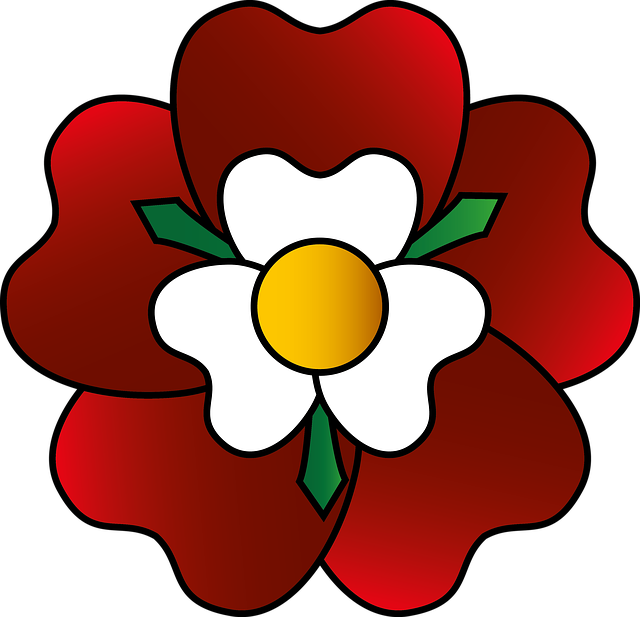
TheHouse of Tudor [1] was an English and Welsh dynasty that held the throne of England from 1485 to 1603.[2] They descended from the Tudors of Penmynydd, a Welsh noble family, and Catherine of Valois. The Tudor monarchs ruled the Kingdom of England and the Lordship of Ireland (later the Kingdom of Ireland) for 118 years with five monarchs: Henry VII, Henry VIII, Edward VI, Mary I and Elizabeth I. The Tudors succeeded the House of Plantagenet as rulers of the Kingdom of England, and were succeeded by the Scottish House of Stuart. The first Tudor monarch, Henry VII, descended through his mother from the House of Beaufort, a legitimised branch of the English royal House of Lancaster, a cadet house of the Plantagenets. The Tudor family rose to power and started the Tudor period in the wake of the Wars of the Roses (1455–1487), which left the main House of Lancaster (with which the Tudors were aligned) extinct in the male line.
La Casa de los Tudor [1] fue una dinastía inglesa y galesa que ocupó el trono de Inglaterra desde 1485 hasta 1603. [2] Descendían de los Tudor de Penmynydd , una familia noble galesa, y Catalina de Valois . Los monarcas Tudor gobernaron el Reino de Inglaterra y el Señorío de Irlanda (más tarde el Reino de Irlanda ) durante 118 años con cinco monarcas: Enrique VII , Enrique VIII , Eduardo VI , María I e Isabel I. Los Tudor sucedieron a la Casa de Plantagenet como gobernantes del Reino de Inglaterra, y fueron sucedidos por la Casa Escocesa de los Estuardo . El primer monarca Tudor, Enrique VII, descendía a través de su madre de la Casa de Beaufort , una rama legitimada de la Casa real inglesa de Lancaster , una casa cadete de los Plantagenet. La familia Tudor llegó al poder e inició el período Tudor a raíz de las Guerras de las Rosas (1455-1487), que dejaron a la Casa principal de Lancaster (con la que estaban alineados los Tudor) extinta en la línea masculina.
1497 John Cabot explora la costa norteamericana.
1509 Enrique VIII sucede en el trono.
Catalina de Aragon
Ana Bolena
Sir Thomas Moro (1478–1535)
La autoridad papal en Inglaterra es abolida; el monarca se convierte en Jefe supremo de la Iglesia de Inglaterra.
La transición entre Enrique VIII y Elizabeth I fue complicada y determinante para el futuro de América y Europa
~ Sacred Music
- Palestrina
- Orlando de Lassus
- William Byrd
- Giovanni Gabrieli
- ~ Claudio Monteverdi
- Orlando Gibbons
- Tomas Luis de Victoria
- Carlo Gesualdo
- Michael Praetorius
Musica Renacimiento Sacro Imperio Romano e Inglaterra
Renaciiento Ingles
- Orlando de Lassus
- Chansons
William Byrd
- Consort songs
- Suite pavanne
- The bells
- Orlando Gibbons
- Pavane and Gaillard
- Fantasy in C major
- Giovanni Gabrieli
- Canzon XVI
- ~ Claudio Monteverdi
- Madrigals book V
- Opera L’Orfeo
- John Dowland
- Lute works
- Lute Songes
- Fantasies 3 & 4
- Gaillards
- Michael Praetorius
- Dances from Terpsichore
- ~Grand Bal à la cour d’Henri IV
- John Taverner (1490–1545),
- Funeral Canticle
- Misa Gloria Tibi Trinitas
Thomas Tallis, (c.1505 –1585)- Mass for four voices
- Spem in Aulio
- William Turner (1509/10 – 1568)
.
1558 Isabel I comienza su reinado de 45 años.
Guy Fawkes ( 1570 – 1606)
Maria Estuardo
Sonet 12
When I do count the clock that tells the time, A
And see the brave day sunk in hideous night; B
When I behold the violet past prime, A
And sable curls, all silvered o’er with white; B
When lofty trees I see barren of leaves, A
Which erst from heat did canopy the herd, B
And summer’s green all girded up in sheaves, A
Borne on the bier with white and bristly beard, B
Then of thy beauty do I question make, A
That thou among the wastes of time must go, B
Since sweets and beauties do themselves forsake A
And die as fast as they see others grow; A
And nothing ‘gainst Time’s scythe can make defence B
Save breed, to brave him when he takes thee hence. B
Playlist
Playlist
Giordano Bruno (/dʒɔːrˈdɑːnoʊ ˈbruːnoʊ/; Italian: [dʒorˈdaːno ˈbruːno]; Latin: Iordanus Brunus Nolanus; born Filippo Bruno, January or February 1548 – 17 February 1600) was an Italian philosopher, poet, cosmological theorist and esotericist.[1] He is known for his cosmological theories, which conceptually extended to include the then-novel Copernican model. He proposed that the stars were distant suns surrounded by their own planets (exoplanets), and he raised the possibility that these planets might foster life of their own, a cosmological position known as cosmic pluralism. He also insisted that the universe is infinite and could have no center.
Giordano Bruno (/dʒɔːrˈdɑːnoʊ ˈbruːnoʊ/; italiano: [dʒorˈdaːno ˈbruːno]; latín: Iordanus Brunus Nolanus; nacido Filippo Bruno, enero o febrero de 1548 – 17 de febrero de 1600) fue un filósofo, poeta, teórico cosmológico y esoterista italiano. [1] Es conocido por sus teorías cosmológicas, que se ampliaron conceptualmente para incluir el entonces novedoso modelo copernicano. Propuso que las estrellas eran soles distantes rodeados de sus propios planetas (exoplanetas), y planteó la posibilidad de que estos planetas pudieran albergar vida propia, una postura cosmológica conocida como pluralismo cósmico. También insistió en que el universo es infinito y no puede tener un centro.
Michelangelo Merisi da Caravaggio (also Michele Angelo Merigi or Amerighi da Caravaggio; /ˌkærəˈvædʒioʊ/, US: /-ˈvɑːdʒ(i)oʊ/, Italian: [mikeˈlandʒelo meˈriːzi da (k)karaˈvaddʒo]; 29 September 1571[2] – 18 July 1610), known mononymously as Caravaggio, was an Italian painter active in Rome for most of his artistic life. During the final four years of his life, he moved between Naples, Malta, and Sicily until his death. His paintings have been characterized by art critics as combining a realistic observation of the human state, both physical and emotional, with a dramatic use of lighting, which had a formative influence on Baroque painting.[3][4][5]
Michelangelo Merisi da Caravaggio (también Michele Angelo Merigi o Amerighi da Caravaggio; /ˌkærəˈvædʒioʊ/, US: /-ˈvɑːdʒ(i)oʊ/, italiano: [mikeˈlandʒelo meˈriːzi da (k)karaˈvaddʒo]; 29 de septiembre de 1571[2] – 18 de julio de 1610), conocido monónimamente como Caravaggio, fue un pintor italiano activo en Roma durante la mayor parte de su vida artística. Durante los últimos cuatro años de su vida, se trasladó entre Nápoles, Malta y Sicilia hasta su muerte. Sus cuadros han sido caracterizados por los críticos de arte por combinar una observación realista del estado humano, tanto físico como emocional, con un uso dramático de la iluminación, que tuvo una influencia formativa en la pintura barroca[3][4][5].
 Miguel de Cervantes Saavedra (Spanish: [miˈɣel de θeɾˈβantes saaˈβeðɾa]; 29 September 1547 (assumed) – 22 April 1616 NS)[5] was an Early Modern Spanish writer widely regarded as the greatest writer in the Spanish language and one of the world’s pre-eminent novelists. He is best known for his novel Don Quixote, a work often cited as both the first modern novel[6][7] and “the first great novel of world literature”.[8] A 2002 poll of 100 well-known authors[b] voted it the “most meaningful book of all time”,[9] from among the “best and most central works in world literature”.[8]
Miguel de Cervantes Saavedra (Spanish: [miˈɣel de θeɾˈβantes saaˈβeðɾa]; 29 September 1547 (assumed) – 22 April 1616 NS)[5] was an Early Modern Spanish writer widely regarded as the greatest writer in the Spanish language and one of the world’s pre-eminent novelists. He is best known for his novel Don Quixote, a work often cited as both the first modern novel[6][7] and “the first great novel of world literature”.[8] A 2002 poll of 100 well-known authors[b] voted it the “most meaningful book of all time”,[9] from among the “best and most central works in world literature”.[8]
Miguel de Cervantes Saavedra (29 de septiembre de 1547 – 22 de abril de 1616 NS)[5] fue un escritor español de la Edad Moderna, considerado el mejor escritor en lengua española y uno de los novelistas más importantes del mundo. Se le conoce sobre todo por su novela El Quijote, una obra citada a menudo tanto como la primera novela moderna[6][7] como “la primera gran novela de la literatura universal”[8]. Una encuesta realizada en 2002 entre 100 autores de renombre[b] la eligió como el “libro más significativo de todos los tiempos”[9], entre las “mejores y más centrales obras de la literatura universal”[8].
Tú, que imitaste la llorosa vida A
que tuve, ausente y desdeñado, sobre B
el gran ribazo de la Peña Pobre. B
De alegre a penitencia reducida; A
tú, a quien los ojos dieron la bebida A
de abundante licor, aunque salobre; B
y alzándote la plata, estaño y cobre, B
te dio la tierra en tierra la comida; A
vive seguro de que eternamente A
(en tanto al menos que en la cuarta esfera, B
sus cabellos aguije el bello Apolo) C
Tendrás claro renombre de valiente; A
tu patria será en todas la primera, B
tu sabio autor al mundo único y solo. C
Lorem ipsum dolor sit amet, consectetur adipiscing elit. Ut elit tellus, luctus nec ullamcorper mattis, pulvinar dapibus leo.
The Florentine Camerata, also known as the Camerata de’ Bardi, were a group of humanists, musicians, poets and intellectuals in late Renaissance Florence who gathered under the patronage of Count Giovanni de’ Bardi to discuss and guide trends in the arts, especially music and drama.[1][2] They met at the house of Giovanni de’ Bardi, and their gatherings had the reputation of having all the most famous men of Florence as frequent guests.[3] After first meeting in 1573, the activity of the Camerata reached its height between 1577 and 1582.[4] While propounding a revival of the Greek dramatic style, the Camerata’s musical experiments led to the development of the stile recitativo. In this way it facilitated the composition of dramatic music and the development of opera.
La Camerata Florentina, también conocida como Camerata de’ Bardi, fue un grupo de humanistas, músicos, poetas e intelectuales de la Florencia del Renacimiento tardío que se reunían bajo el patrocinio del conde Giovanni de’ Bardi para debatir y orientar las tendencias de las artes, especialmente la música y el teatro[1][2]. [1] [2] Se reunían en la casa de Giovanni de’ Bardi, y sus tertulias tenían fama de contar con todos los hombres más famosos de Florencia como invitados frecuentes. 3] Tras reunirse por primera vez en 1573, la actividad de la Camerata alcanzó su apogeo entre 1577 y 1582. 4] Al tiempo que propugnaban una recuperación del estilo dramático griego, los experimentos musicales de la Camerata condujeron al desarrollo del estilo recitativo. De este modo, facilitó la composición de música dramática y el desarrollo de la ópera.
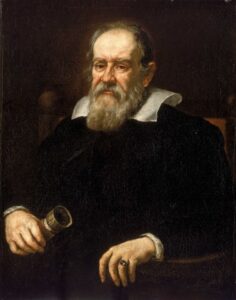 Galileo di Vincenzo Bonaiuti de’ Galilei (15 February 1564 – 8 January 1642), commonly referred to as Galileo Galilei (/ˌɡælɪˈleɪoʊ ˌɡælɪˈleɪ/ GAL-il-AY-oh GAL-il-AY, US also /ˌɡælɪˈliːoʊ -/ GAL-il-EE-oh -, Italian: [ɡaliˈlɛːo ɡaliˈlɛːi]) or simply Galileo, was an Italian astronomer, physicist and engineer, sometimes described as a polymath. He was born in the city of Pisa, then part of the Duchy of Florence.[3] Galileo has been called the father of observational astronomy,[4] modern-era classical physics,[5] the scientific method,[6] and modern science.[7]
Galileo di Vincenzo Bonaiuti de’ Galilei (15 February 1564 – 8 January 1642), commonly referred to as Galileo Galilei (/ˌɡælɪˈleɪoʊ ˌɡælɪˈleɪ/ GAL-il-AY-oh GAL-il-AY, US also /ˌɡælɪˈliːoʊ -/ GAL-il-EE-oh -, Italian: [ɡaliˈlɛːo ɡaliˈlɛːi]) or simply Galileo, was an Italian astronomer, physicist and engineer, sometimes described as a polymath. He was born in the city of Pisa, then part of the Duchy of Florence.[3] Galileo has been called the father of observational astronomy,[4] modern-era classical physics,[5] the scientific method,[6] and modern science.[7]
Wikipedia
Galileo di Vincenzo Bonaiuti de’ Galilei (15 de febrero de 1564 – 8 de enero de 1642), comúnmente conocido como Galileo Galilei (/ˌɡælɪˈleɪoʊ ˌɡælɪˈleɪ/ GAL-il-AY-oh GAL-il-AY, US también /ˌɡælɪˈliːoʊ -/ GAL-il-EE-oh -, italiano: [ɡaliˈlɛːo ɡaliˈlɛːi]) o simplemente Galileo, fue un astrónomo, físico e ingeniero italiano, a veces descrito como un polímata. Nació en la ciudad de Pisa, entonces parte del Ducado de Florencia[3]. Galileo ha sido llamado el padre de la astronomía observacional,[4] de la física clásica de la era moderna,[5] del método científico,[6] y de la ciencia moderna[7].
 Marin Mersenne, OM (also known as Marinus Mersennus or le Père Mersenne; French: [maʁɛ̃ mɛʁsɛn]; 8 September 1588 – 1 September 1648) was a French polymath whose works touched a wide variety of fields. He is perhaps best known today among mathematicians for Mersenne prime numbers, those written in the form Mn = 2n − 1 for some integer n. He also developed Mersenne’s laws, which describe the harmonics of a vibrating string (such as may be found on guitars and pianos), and his seminal work on music theory, Harmonie universelle, for which he is referred to as the “father of acoustics“.[1][2] Mersenne, an ordained Catholic priest, had many contacts in the scientific world and has been called “the center of the world of science and mathematics during the first half of the 1600s”[3] and, because of his ability to make connections between people and ideas, “the post-box of Europe”.[4] He was also a member of the ascetical Minim religious order and wrote and lectured on theology and philosophy.
Marin Mersenne, OM (also known as Marinus Mersennus or le Père Mersenne; French: [maʁɛ̃ mɛʁsɛn]; 8 September 1588 – 1 September 1648) was a French polymath whose works touched a wide variety of fields. He is perhaps best known today among mathematicians for Mersenne prime numbers, those written in the form Mn = 2n − 1 for some integer n. He also developed Mersenne’s laws, which describe the harmonics of a vibrating string (such as may be found on guitars and pianos), and his seminal work on music theory, Harmonie universelle, for which he is referred to as the “father of acoustics“.[1][2] Mersenne, an ordained Catholic priest, had many contacts in the scientific world and has been called “the center of the world of science and mathematics during the first half of the 1600s”[3] and, because of his ability to make connections between people and ideas, “the post-box of Europe”.[4] He was also a member of the ascetical Minim religious order and wrote and lectured on theology and philosophy.
Marin Mersenne, OM (también conocido como Marinus Mersennus o le Père Mersenne; francés: [maʁɛ̃ mɛʁsɛn]; 8 de septiembre de 1588 – 1 de septiembre de 1648) fue un polímata francés cuyos trabajos abarcaron una gran variedad de campos. Quizá sea más conocido entre los matemáticos por los números primos de Mersenne, que se escriben de la forma Mn = 2n – 1 para un número entero n. También desarrolló las leyes de Mersenne, que describen los armónicos de una cuerda vibrante (como las que se pueden encontrar en guitarras y pianos), y su obra fundamental sobre teoría musical, Harmonie universelle, por la que se le conoce como el “padre de la acústica”. [Mersenne, sacerdote católico ordenado, tenía muchos contactos en el mundo científico y se le ha llamado “el centro del mundo de la ciencia y las matemáticas durante la primera mitad del siglo XVII”[3] y, por su capacidad para establecer conexiones entre personas e ideas, “el buzón de Europa”[4]. También fue miembro de la orden religiosa ascética de los Mínimos y escribió y dio conferencias sobre teología y filosofía.
Lorem ipsum dolor sit amet, consectetur adipiscing elit. Ut elit tellus, luctus nec ullamcorper mattis, pulvinar dapibus leo.
In mathematics, a Mersenne prime is a prime number that is one less than a power of two. That is, it is a prime number of the form Mn = 2n − 1 for some integer n. They are named after Marin Mersenne, a French Minim friar, who studied them in the early 17th century. If n is a composite number then so is 2n − 1. Therefore, an equivalent definition of the Mersenne primes is that they are the prime numbers of the form Mp = 2p − 1 for some prime p.
En matemáticas, un número primo de Mersenne es un número primo que es uno menos que una potencia de dos. Es decir, es un número primo de la forma Mn = 2n – 1 para algún número entero n. Deben su nombre a Marin Mersenne, un fraile mínimo francés que los estudió a principios del siglo XVII. Si n es un número compuesto, 2n – 1 también lo es. Por lo tanto, una definición equivalente de los primos de Mersenne es que son los números primos de la forma Mp = 2p – 1 para algún primo p.
Lorem ipsum dolor sit amet, consectetur adipiscing elit. Ut elit tellus, luctus nec ullamcorper mattis, pulvinar dapibus leo.
 Francisco Bartolomé Sanz Celma (April 4, 1640 (baptized) – 1710), better known as Gaspar Sanz, was a Spanish composer, guitarist, and priest born to a wealthy family in Calanda in the comarca of Bajo Aragón, Spain. He studied music, theology and philosophy at the University of Salamanca, where he was later appointed Professor of Music. He wrote three volumes of pedagogical works for the baroque guitar that form an important part of today’s classical guitar repertory and have informed modern scholars in the techniques of baroque guitar playing
Francisco Bartolomé Sanz Celma (April 4, 1640 (baptized) – 1710), better known as Gaspar Sanz, was a Spanish composer, guitarist, and priest born to a wealthy family in Calanda in the comarca of Bajo Aragón, Spain. He studied music, theology and philosophy at the University of Salamanca, where he was later appointed Professor of Music. He wrote three volumes of pedagogical works for the baroque guitar that form an important part of today’s classical guitar repertory and have informed modern scholars in the techniques of baroque guitar playing
Francisco Bartolomé Sanz Celma (4 de abril de 1640 (bautizado) – 1710), más conocido como Gaspar Sanz, fue un compositor, guitarrista y sacerdote español nacido en una familia acomodada de Calanda, en la comarca del Bajo Aragón, España. Estudió música, teología y filosofía en la Universidad de Salamanca, donde más tarde fue nombrado catedrático de música. Escribió tres volúmenes de obras pedagógicas para la guitarra barroca que forman una parte importante del repertorio de guitarra clásica actual y han informado a los estudiosos modernos sobre las técnicas de la interpretación de la guitarra barroca.
Lorem ipsum dolor sit amet, consectetur adipiscing elit. Ut elit tellus, luctus nec ullamcorper mattis, pulvinar dapibus leo.
Marin Marais (1656 – 1728)
Francisco de Quevedo (1580-1645)
Los sueños
Yo, que arrebatado de la consideración, me vi a los pies de los desengaños, rendido, con lastimoso sentimiento y con celo enojado, repetí a éstos en la fantasía:¡Qué perezosos pies, qué entretenidos A
Pasos lleva la muerte por mis daños! B
El camino me alargan los engaños B
Y en mí se escandalizan los perdidos. AMis ojos no se dan por entendidos , A
Y, por descaminar mis desengaños, B
Me disimulan la verdad los años B
Y les guardan el sueño a los sentidos. ADel vientre a la prisión vine en naciendo, A
De la prisión iré al sepulcro amando, A
Y siempre en el sepulcro estaré ardiendo: ACuantos plazos la muerte me va dando, A
Prolijidades son, que va creciendo, A
Porque no acabe de morir penando. ALuis de Góngora y Argote ( 1561 – 1627)
“A UN PEYNE, QUE NO SABIA EL POETA SI ERA DE BOX O DE MARFIL.
“Surca del mar de amor las rubias ondas, A
barco de Barcelona, y por los bellos B
lazos navega altivo, aunque por ellos B
tal vez te muestres, y tal vez te escondas. AYa no flechas, Amor, doradas ondas A
teje de sus esplendidos cabellos; B
tu con los dientes no lo quites dellos, B
para que a tanta dicha correspondas. ADesenvuelve los rizos con decoro, A
los paralelos de mi sol desata, B
box o colmillo de elephante Moro, Ay en tanto que esparcidos los dilata B
forma por la madeja sendas de oro A
antes que el tiempo lss convierta en plata.” B
Lorem ipsum dolor sit amet, consectetur adipiscing elit. Ut elit tellus, luctus nec ullamcorper mattis, pulvinar dapibus leo.
- Inglaterra
- John Milton (1608–1674)
Paradise Lost
Of Man’s first disobedience, and the fruit
Of that forbidden tree whose mortal taste
Brought death into the World, and all our woe,
With loss of Eden, till one greater Man
Restore us, and regain the blissful seat,
Sing, Heavenly Muse, that, on the secret top
Of Oreb, or of Sinai, didst inspire
That shepherd who first taught the chosen seed
In the beginning how the heavens and earth
Rose out of Chaos: or, if Sion hill
Delight thee more, and Siloa’s brook that flowed
Fast by the oracle of God, I thence
Invoke thy aid to my adventurous song,
That with no middle flight intends to soar
Above th’ Aonian mount, while it pursues
Things unattempted yet in prose or rhyme.
And chiefly thou, O Spirit, that dost prefer
Before all temples th’ upright heart and pure,
Instruct me, for thou know’st; thou from the first
Wast present, and, with mighty wings outspread,
…….
Sir Isaac Newton (1642 – 1726)
Playlist
Lorem ipsum dolor sit amet, consectetur adipiscing elit. Ut elit tellus, luctus nec ullamcorper mattis, pulvinar dapibus leo.
Christiaan Huygens(1629 –1695)
Mersenne intercambiaba información con Huygens de manera regular y fué una gran influencia en cuanto al espíritu de diseminación de información que habría de llevarlo a presidir la Academia de las ciencias en Pari
La precisión de sus resultados ha sido una de las mas persistentes en la historia de la ciencia….
Lorem ipsum dolor sit amet, consectetur adipiscing elit. Ut elit tellus, luctus nec ullamcorper mattis, pulvinar dapibus leo.
Playlist
Lorem ipsum dolor sit amet, consectetur adipiscing elit. Ut elit tellus, luctus nec ullamcorper mattis, pulvinar dapibus leo.

*oil on paper on panel
*30 x 24 cm
*signed b.l.: C.Netscher / 1671
Christiaan Huygens , Señor de Zeelhem , FRS ( / ˈ h aɪ ɡ ən z / HY -gənz , [2] US : / ˈ h ɔɪ ɡ ən z / HOY -gənz , [3] Holandés: [ˈkrɪstijaːn ˈɦœyɣə(n)s ] ⓘ ; también escritoHuyghens;Latín:Hugenius; (14 de abril de 1629 – 8 de julio de 1695) fue unmatemático,físico,ingeniero,astrónomoeinventorconsiderado una figura clave en laRevolución Científica. [4] [5] En física, Huygens hizo contribuciones fundamentales ala ópticayla mecánica, mientras que como astrónomo estudió losanillos de Saturnoy descubrió su luna más grande,Titán. Como ingeniero e inventor, mejoró el diseño de los telescopios e inventó elreloj de péndulo, el cronometrador más preciso durante casi 300 años. Un talentoso matemático y físico, sus obras contienen la primera idealización de un problema físico mediante un conjunto deparámetrosmatemáticos , [6] y la primera explicación matemática y mecanicista de unno observable. [7]
Christiaan Huygens , Lord of Zeelhem , FRS ( / ˈ h aɪ ɡ ən z / HY -gənz , [2] US : / ˈ h ɔɪ ɡ ən z / HOY -gənz , [3] Dutch: [ˈkrɪstijaːn ˈɦœyɣə(n)s ] ⓘ ; also spelledHuyghens;Latin: Hugenius; (April 14, 1629 – July 8, 1695) was a mathematician,physicist,engineer,astronomerandinventorconsidered a key figure in theScientific Revolution. [4][5] In physics, Huygens made fundamental contributions to optics and mechanics, while as an astronomer he studied Saturn’s rings and discovered its largest moon, Titan. As an engineer and inventor, he improved the design of telescopes and invented the pendulum clock, the most accurate timekeeper for nearly 300 years. A gifted mathematician and physicist, his works contain the first idealization of a physical problem by a set of mathematical parameters, [6] and the first mathematical and mechanistic explanation of an unobservable. [7]
Lorem ipsum dolor sit amet, consectetur adipiscing elit. Ut elit tellus, luctus nec ullamcorper mattis, pulvinar dapibus leo.
Lorem ipsum dolor sit amet, consectetur adipiscing elit. Ut elit tellus, luctus nec ullamcorper mattis, pulvinar dapibus leo.
Still hungry? Here’s more
Música Barroca
La música del barroco, un período que abarca aproximadamente desde principios del siglo XVII hasta
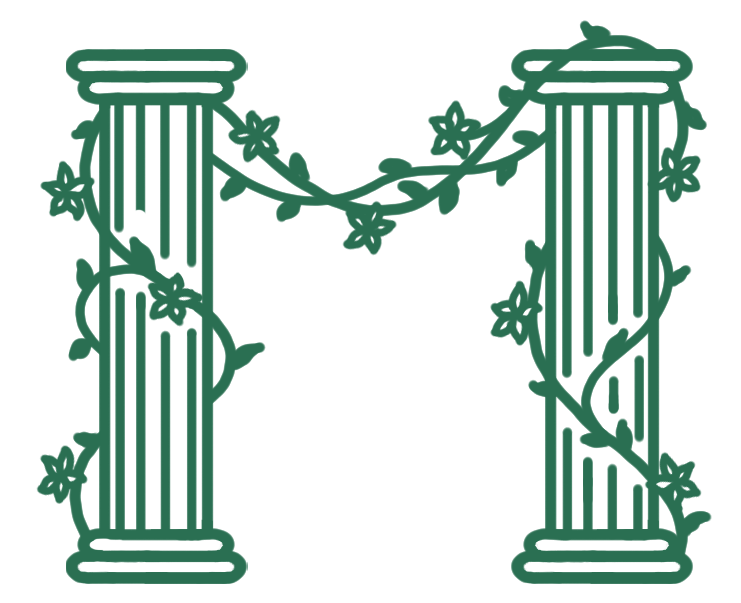
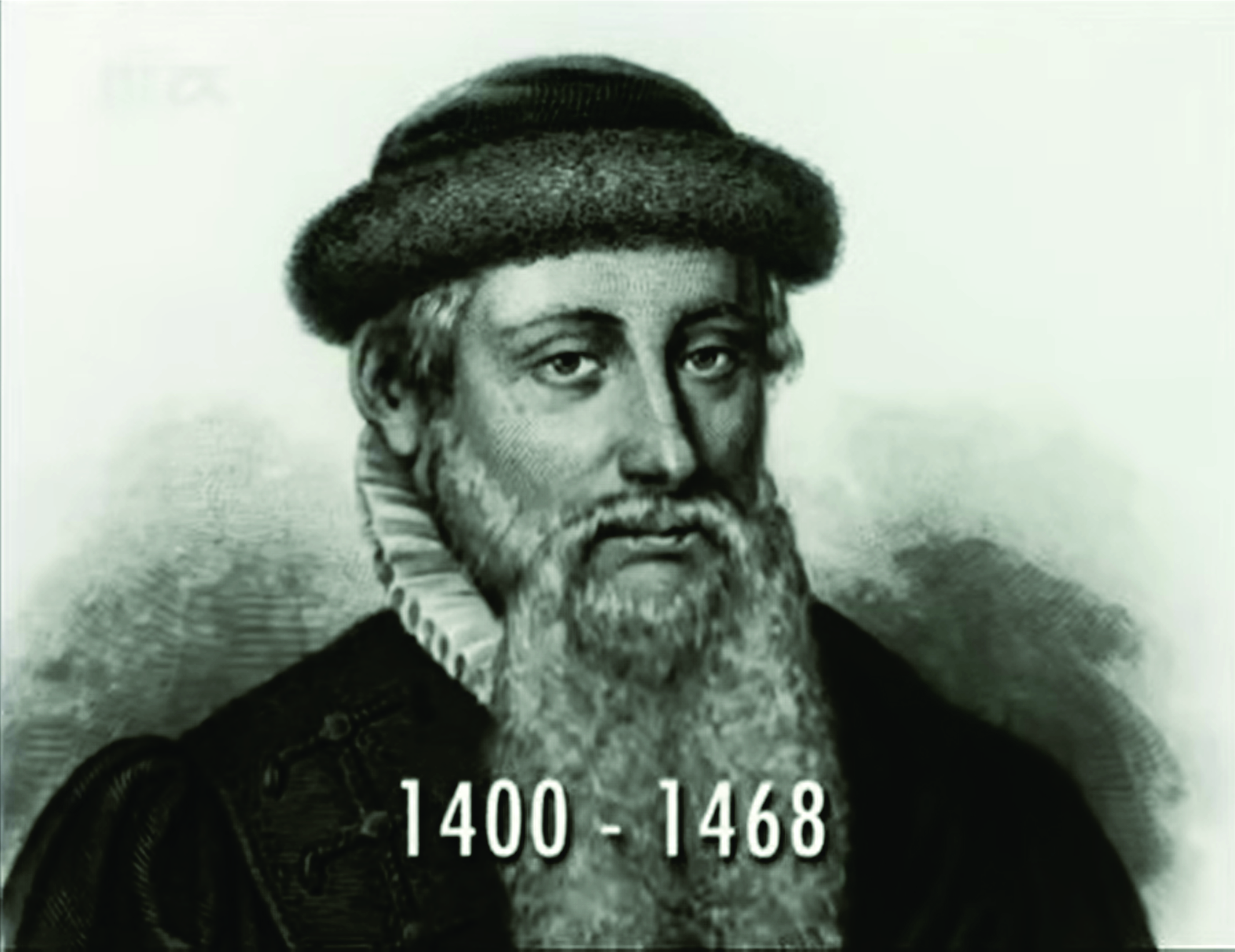







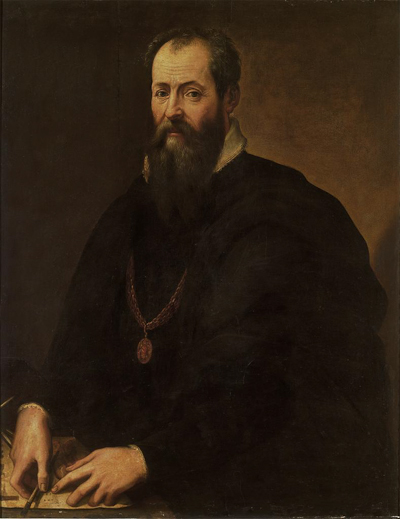



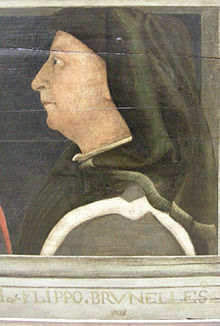
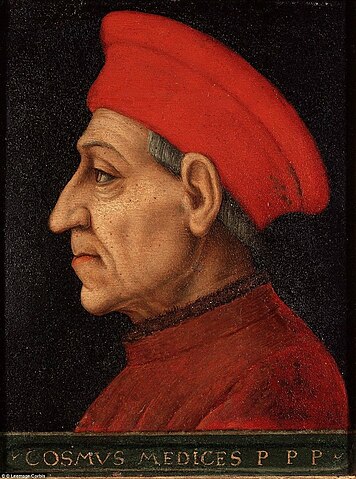
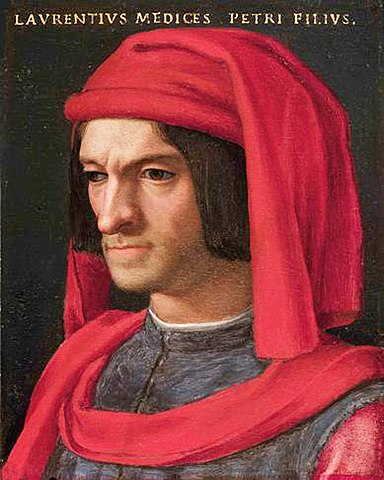









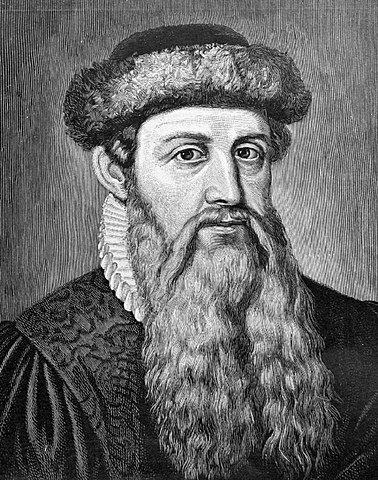

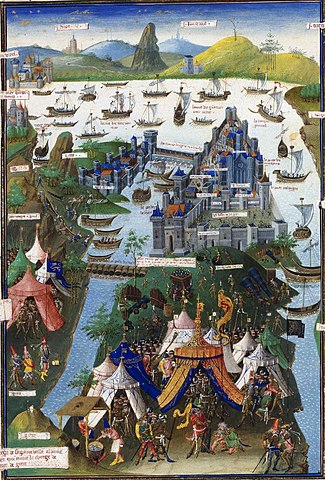
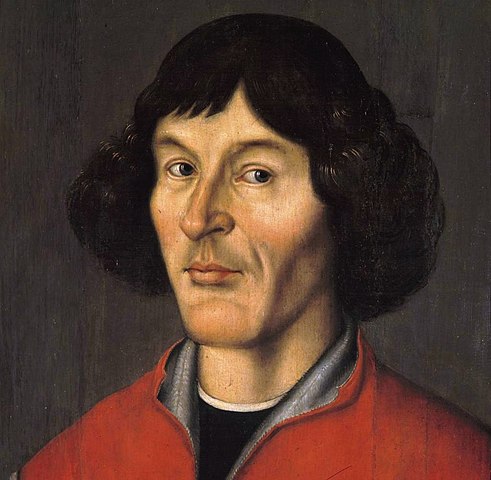
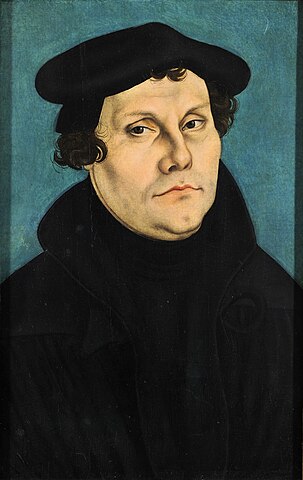
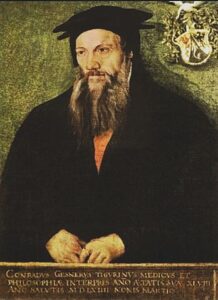
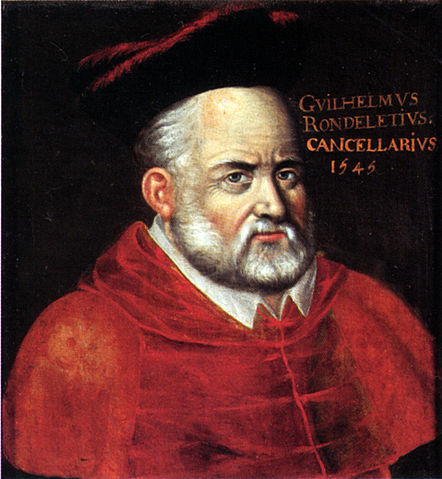
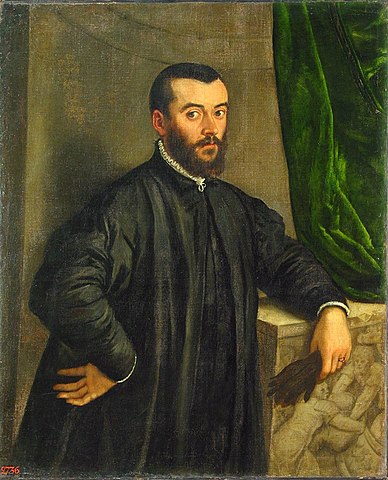
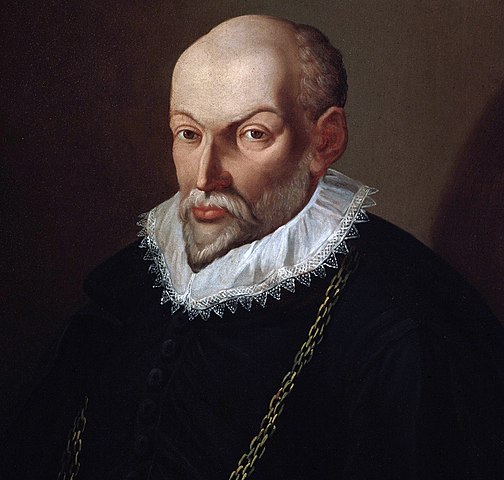





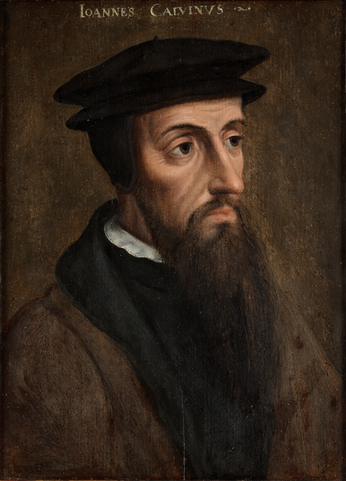
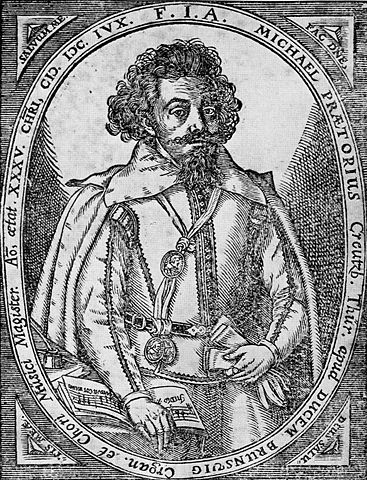





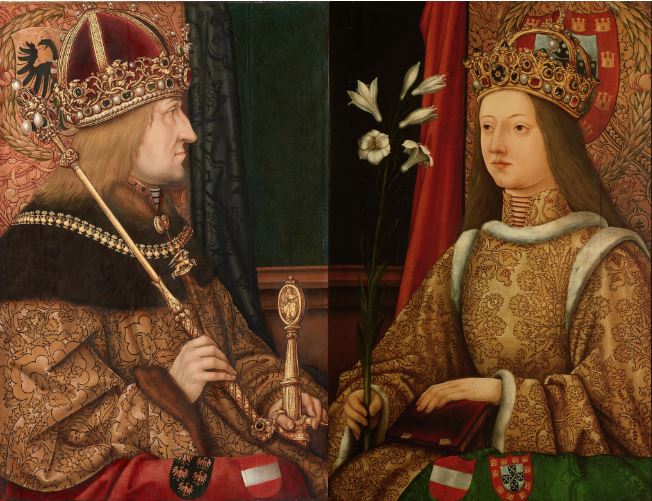
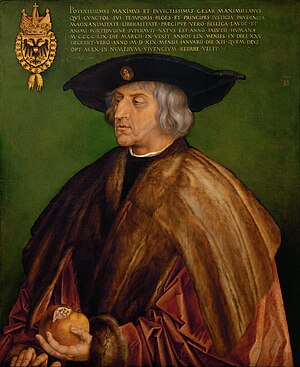
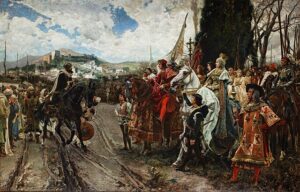







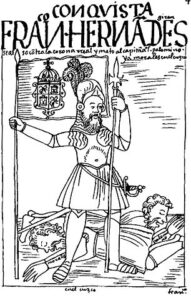
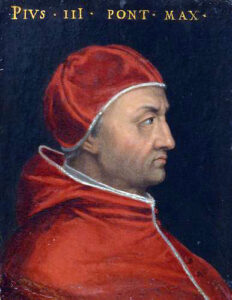
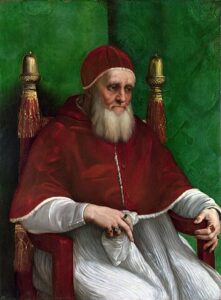
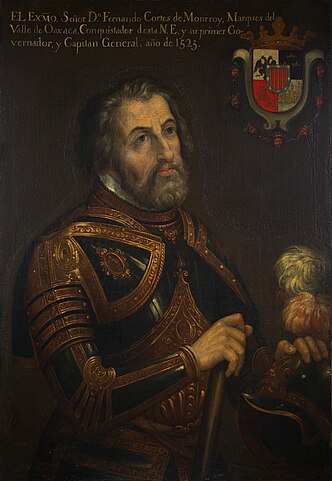
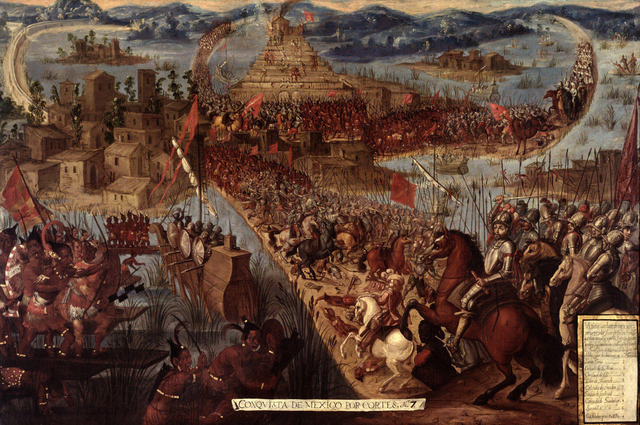
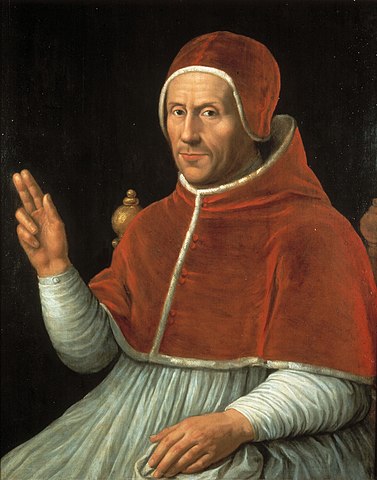

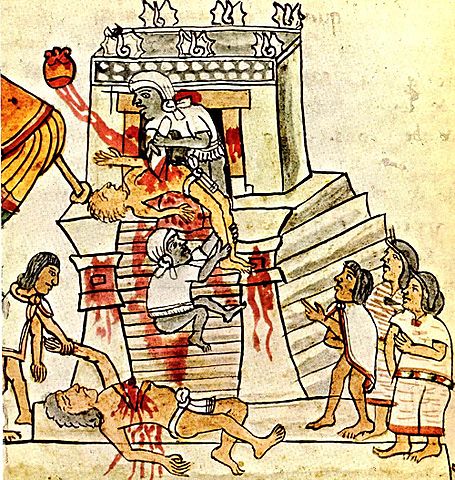
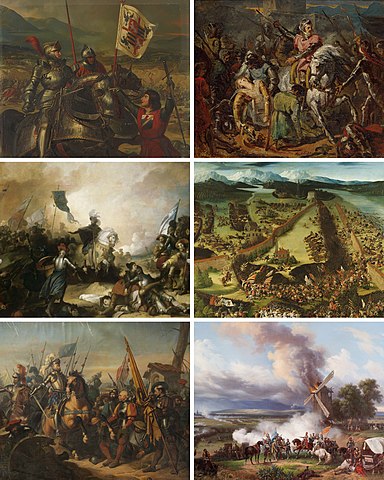
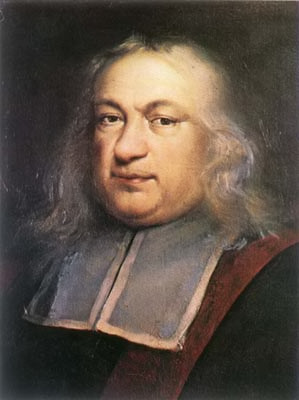
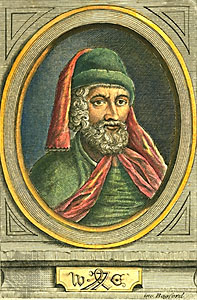
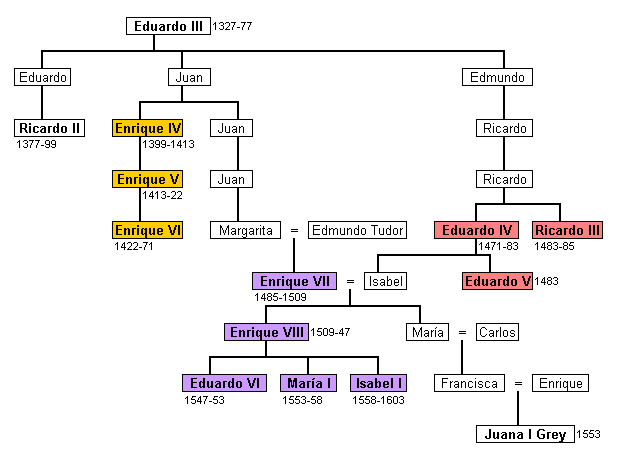
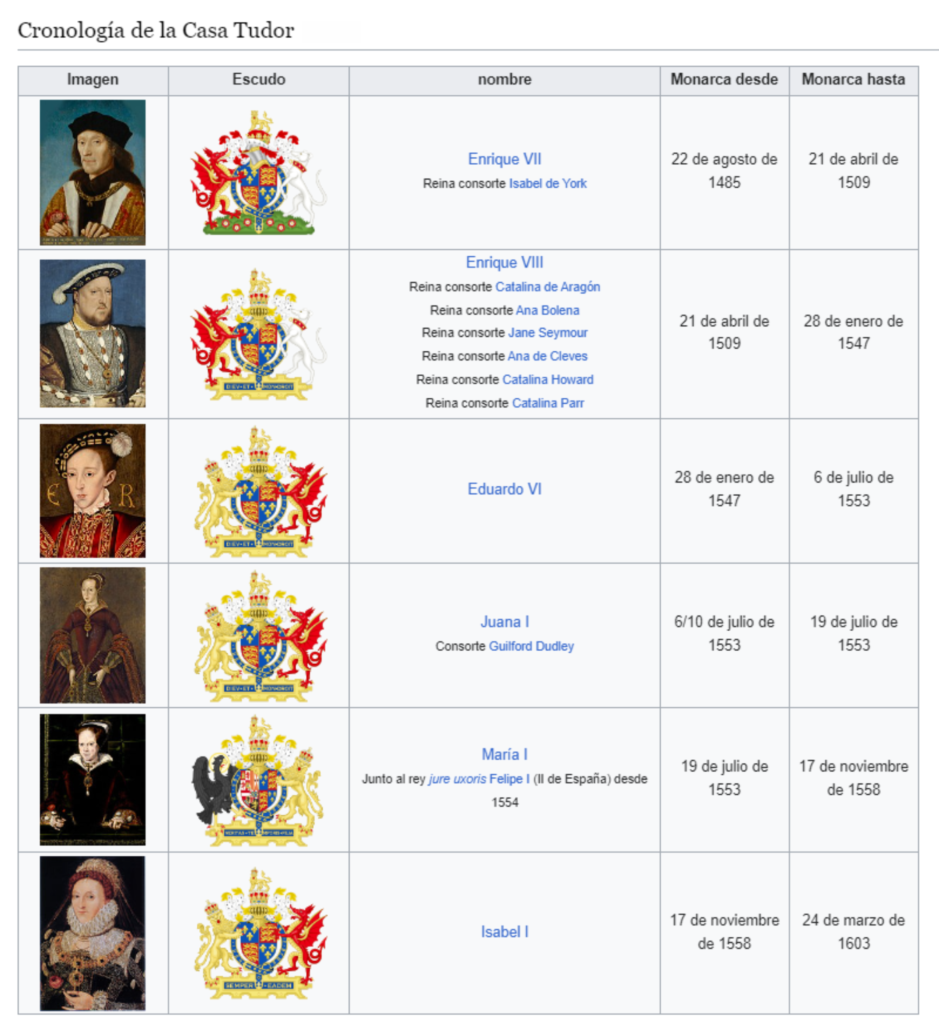
























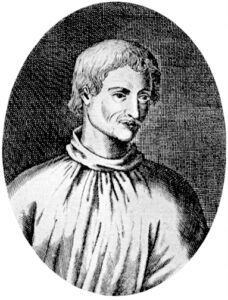 Giordano Bruno (1548–1600)
Giordano Bruno (1548–1600)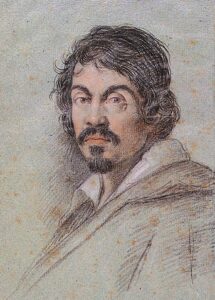 Caravaggio (1571 – 1610)
Caravaggio (1571 – 1610) 














